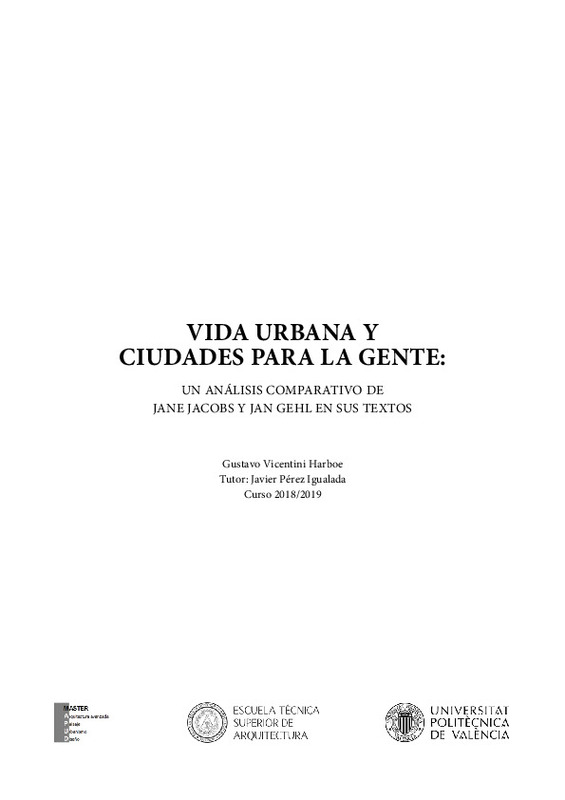|
Resumen:
|
[ES] La palabra "vida" aparece tanto en el título del libro de Jane Jacobs, Death and Life of Great American Cities (Muerte y vida de las grandes ciudades en su traducción española), publicado en 1961, como en el de Jan ...[+]
[ES] La palabra "vida" aparece tanto en el título del libro de Jane Jacobs, Death and Life of Great American Cities (Muerte y vida de las grandes ciudades en su traducción española), publicado en 1961, como en el de Jan Gehl, Life between buildings: Using Public Space (traducido al español como La humanización del espacio urbano), publicado en 1971. Ambos libros parten de la crítica al urbanismo del movimiento moderno, por su incapacidad para generar entornos con un uso intensivo y diverso del espacio público, aptos para la vida urbana, y proponen el abandono de la zonificación y el retorno a los valores de las ciudades densas y complejas. Por todo ello, han tenido una gran influencia en el devenir del urbanismo contemporáneo, pero ¿constituyen un discurso único e inseparable? A ello trata de responder este trabajo. En la primera sección, se examinará el contexto tanto de los autores como de la publicación de las obras, así como su impacto y trayectoria posterior. En la segunda sección se presenta un análisis comparativo de ambos textos, profundizando en sus matices y en la convergencia o divergencia entre las estructuras de las obras, temáticas tratadas, profundidad, metodologías, y discursos empleados. Del estudio de los contextos y del análisis comparativo de las obras se derivarán las conclusiones del trabajo.
[-]
[EN] The word "life" appears both in the title of Jane Jacobs' book, Death and Life of Great American Cities (Vida y muerte de las grandes ciudades in its Spanish translation), published in 1961, and in that of Jan Gehl, ...[+]
[EN] The word "life" appears both in the title of Jane Jacobs' book, Death and Life of Great American Cities (Vida y muerte de las grandes ciudades in its Spanish translation), published in 1961, and in that of Jan Gehl, Life between buildings: Using Public Space (translated into Spanish as La humanización del espacio público), published in 1971. Both books show a critic attitude towards modern urbanism, for their inability to generate environments with an intensive and diverse use of public space, apt for urban life, and propose the abandonment of zoning and the return to the values of dense and complex cities. For all these reasons, they have had a great influence on the future of contemporary urbanism but, do they constitute a unique and inseparable discourse? This is what this work tries to answer. In the first section, the context of both the authors and the publication of the works will be examined, as well as their impact and subsequent trajectory. In the second section, a comparative analysis of both texts is presented, deepening in their nuances and in the convergence or divergence between the structures of the works, the topics dealt with, depth, methodologies, and discourses used. The conclusiones of the work will result from the study of the contexts and the comparative analysis of the texts.
[-]
|







